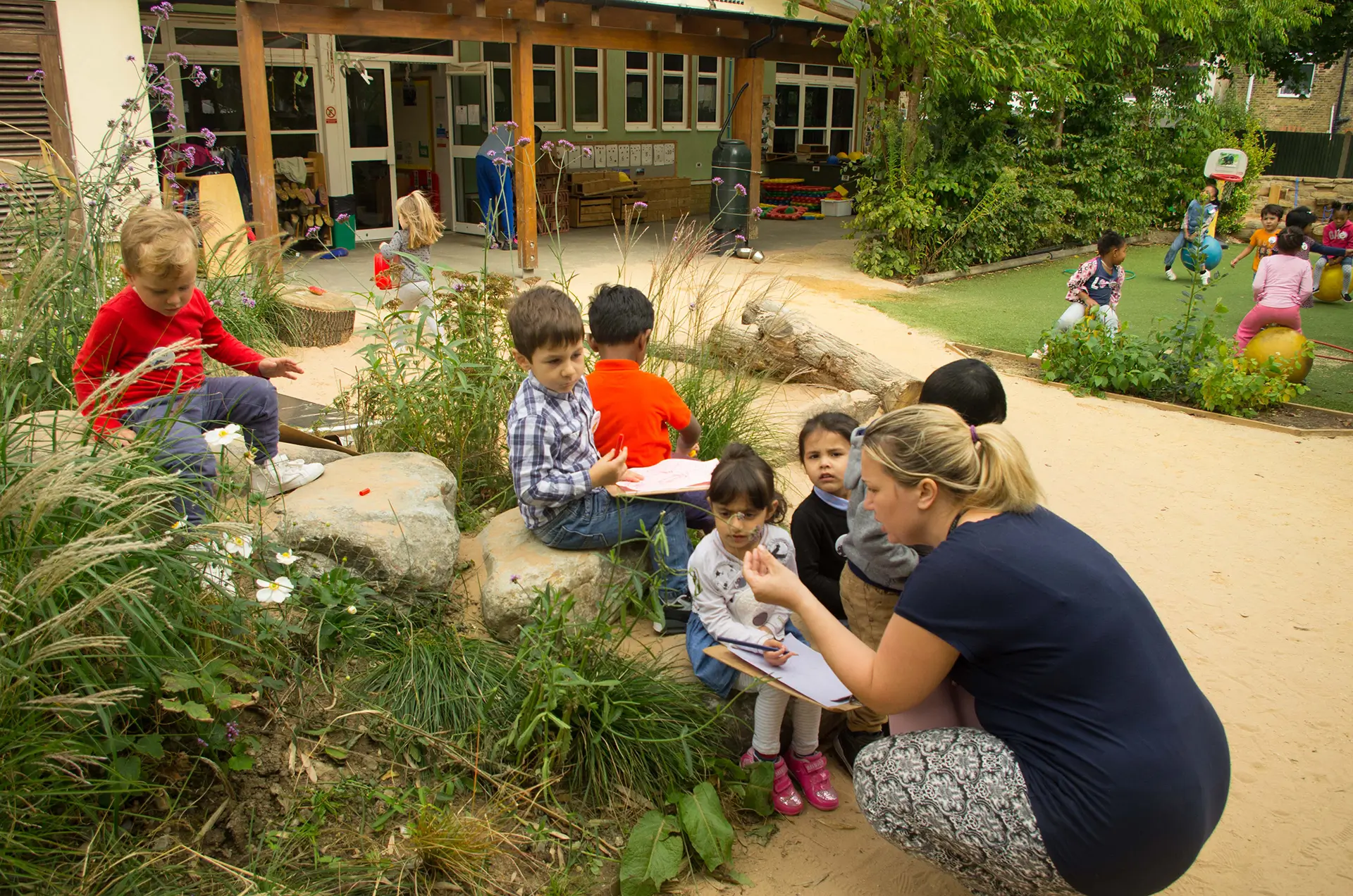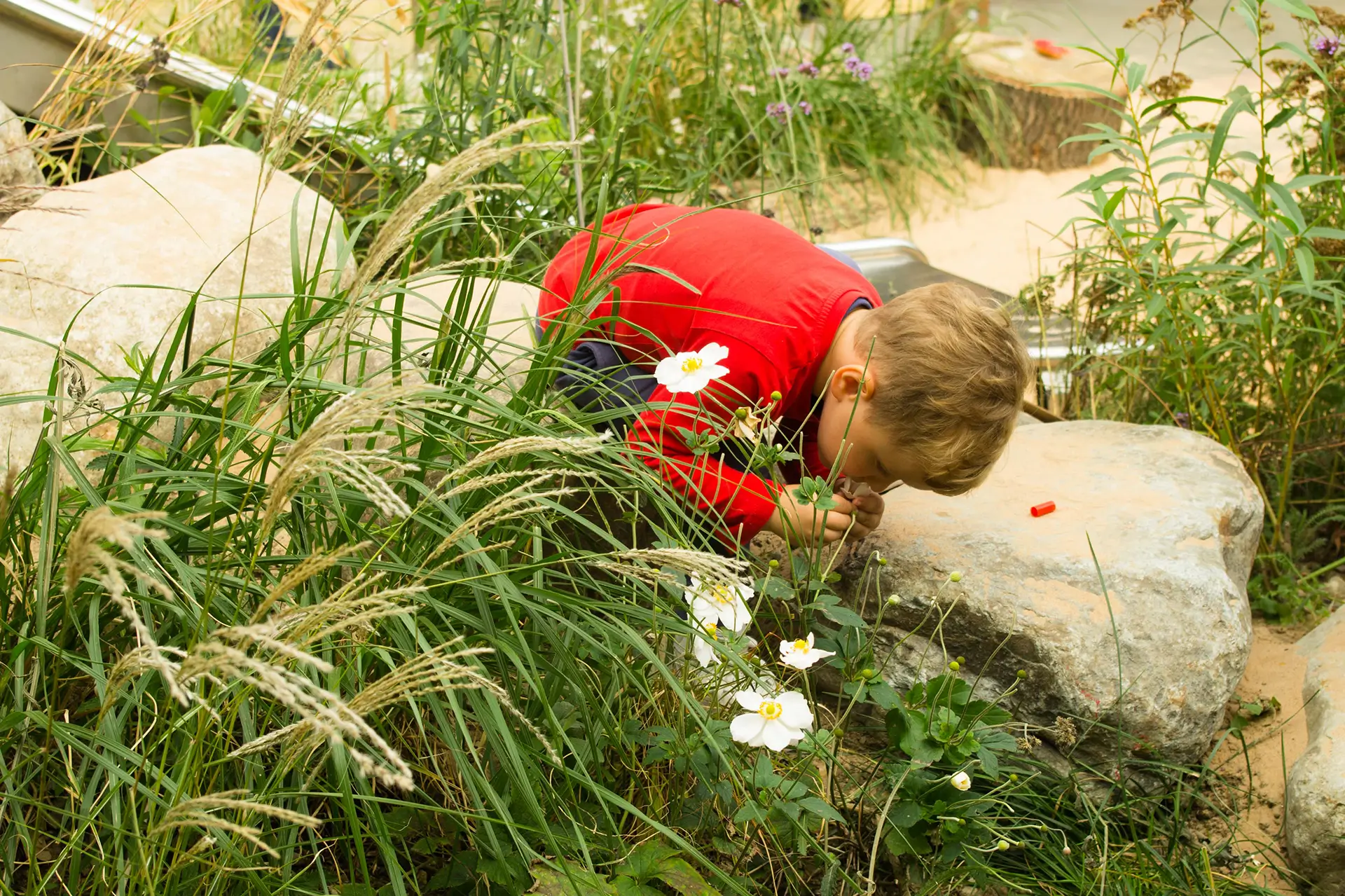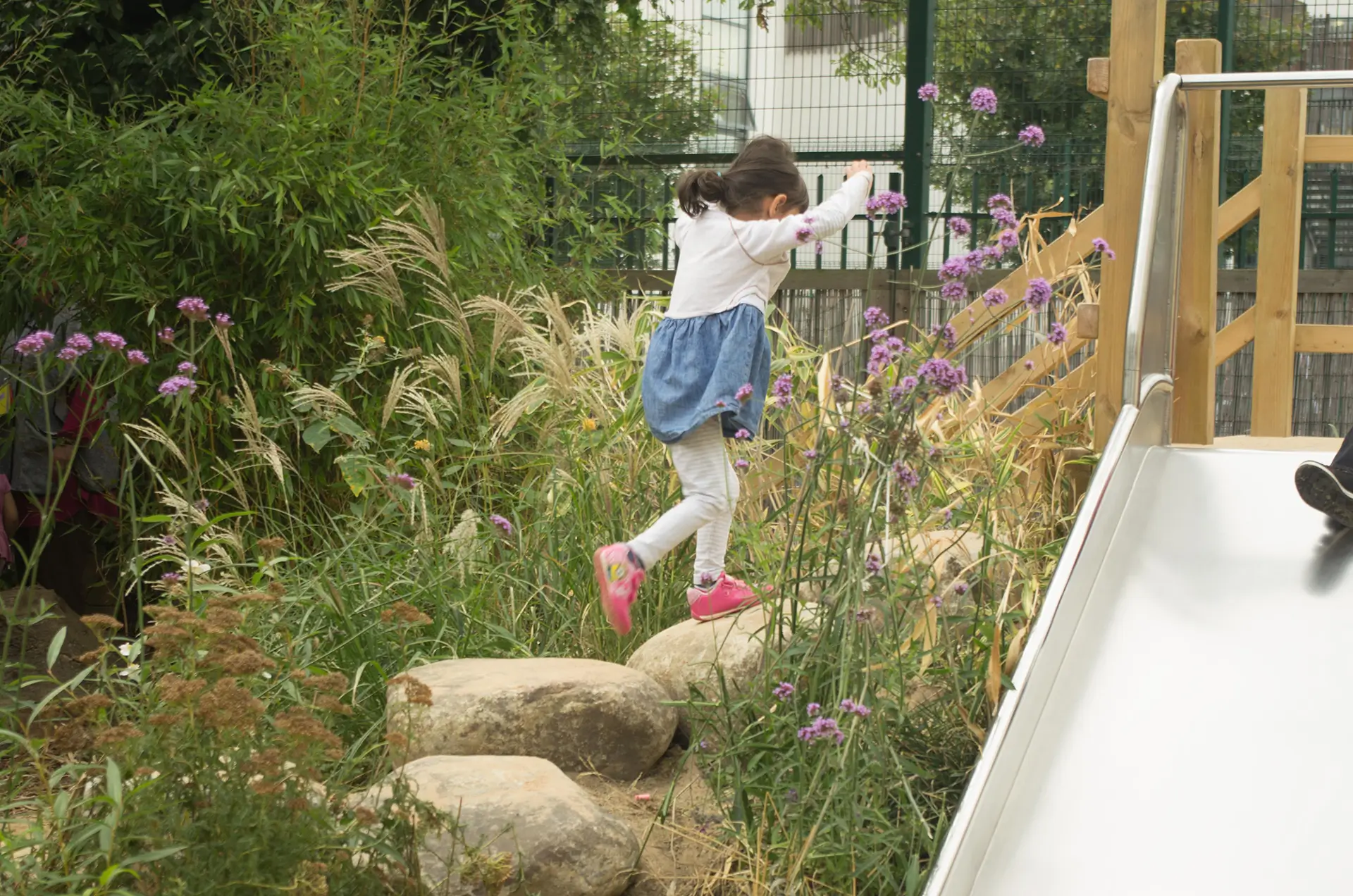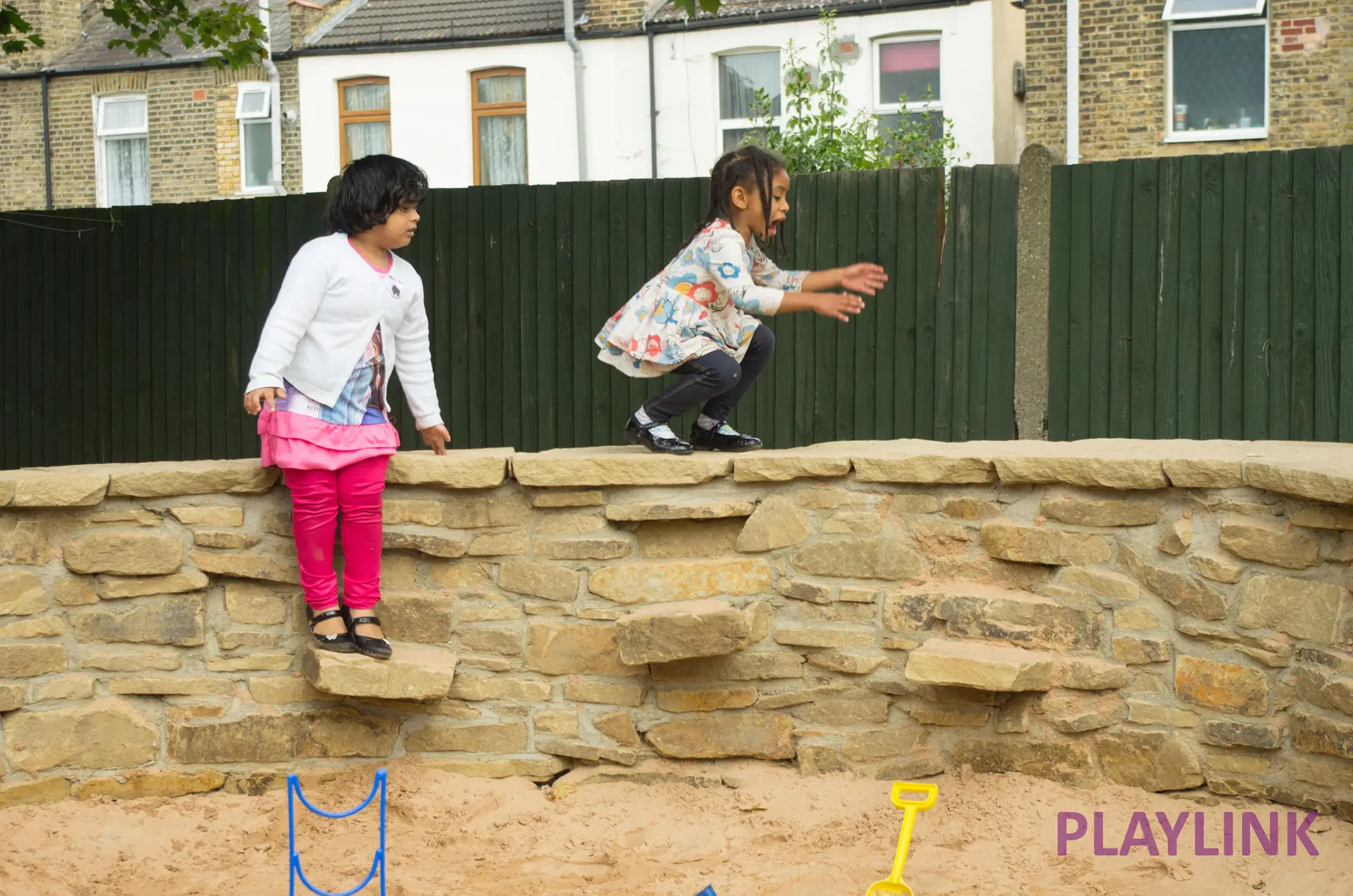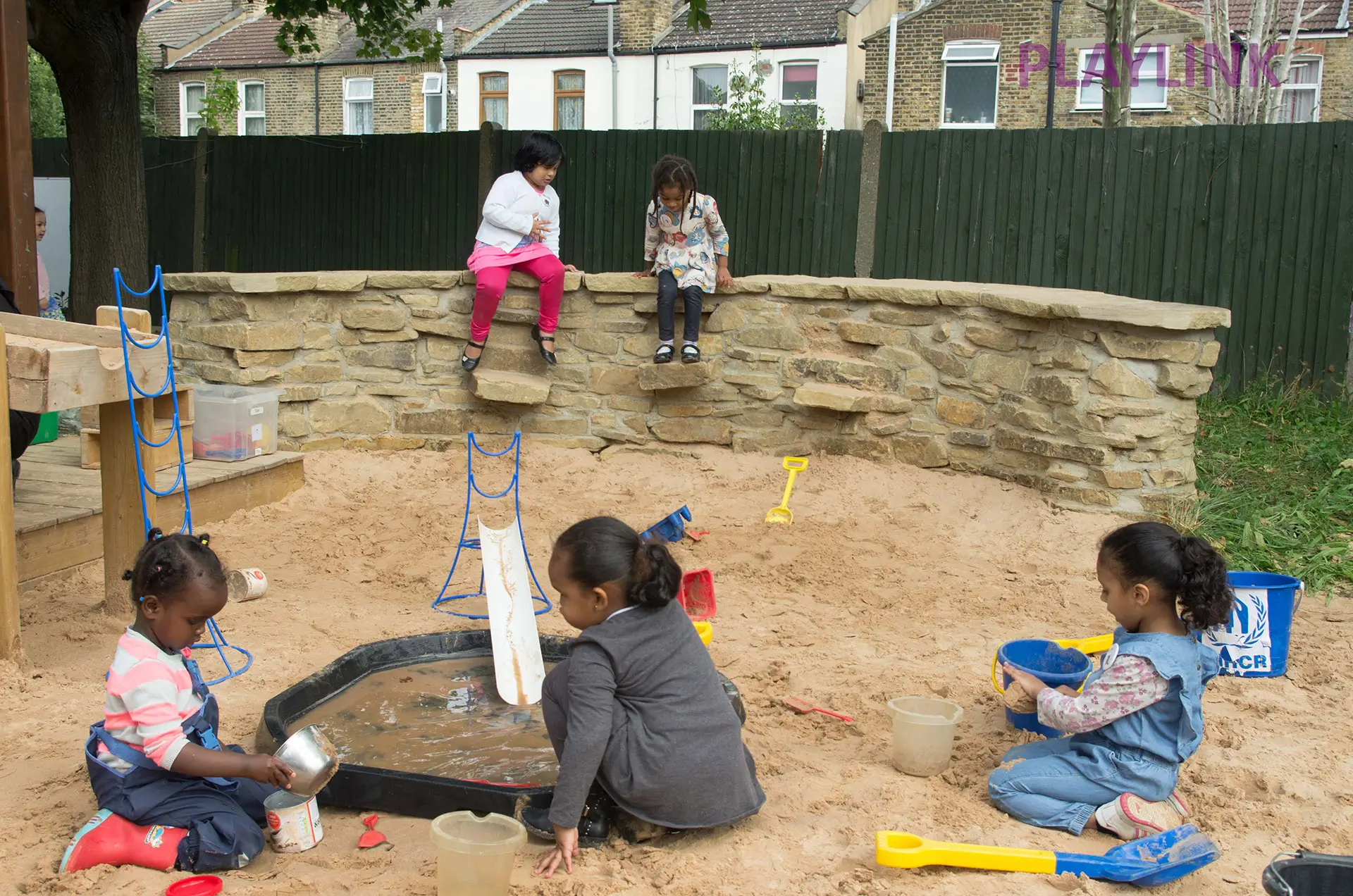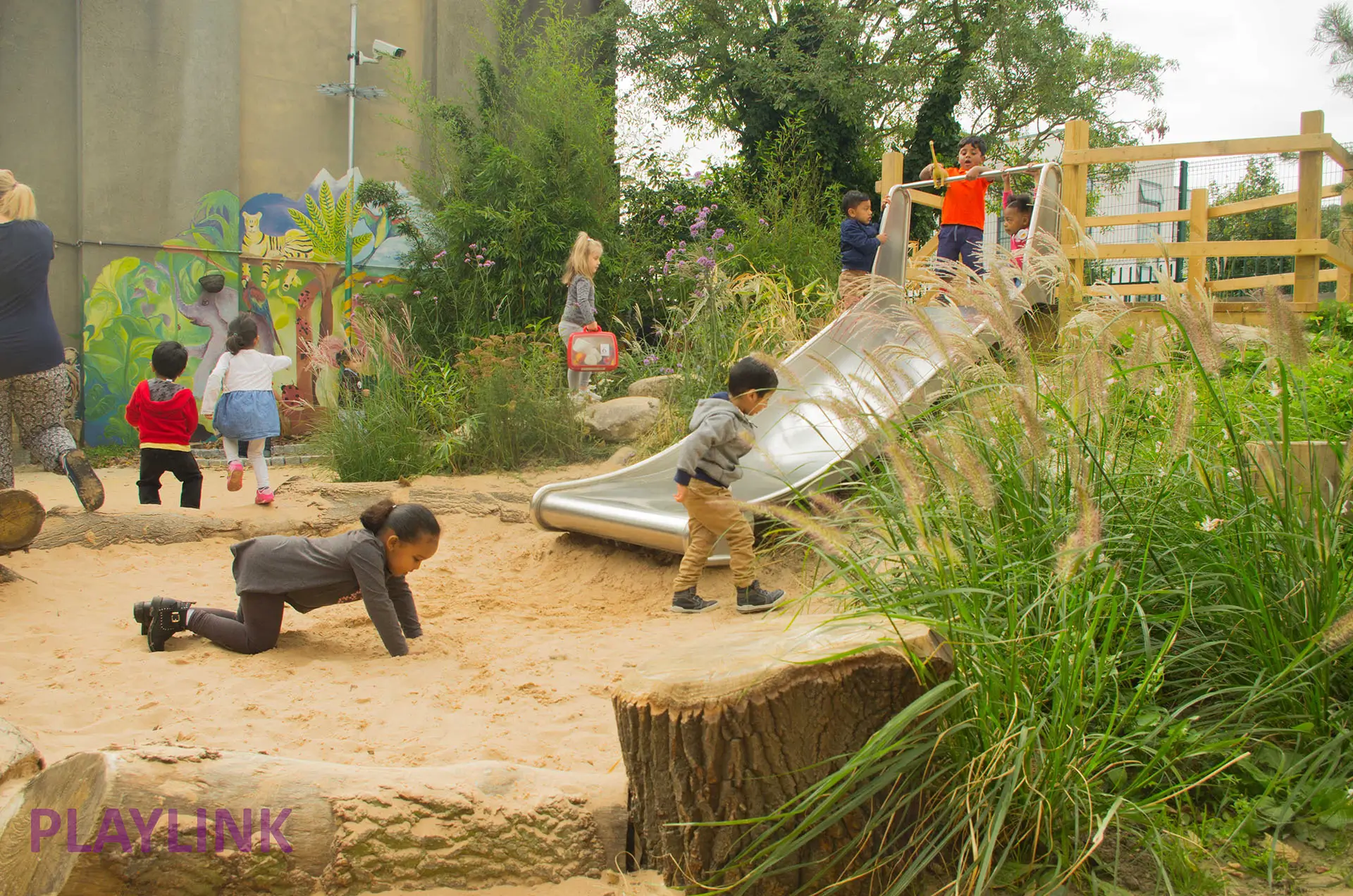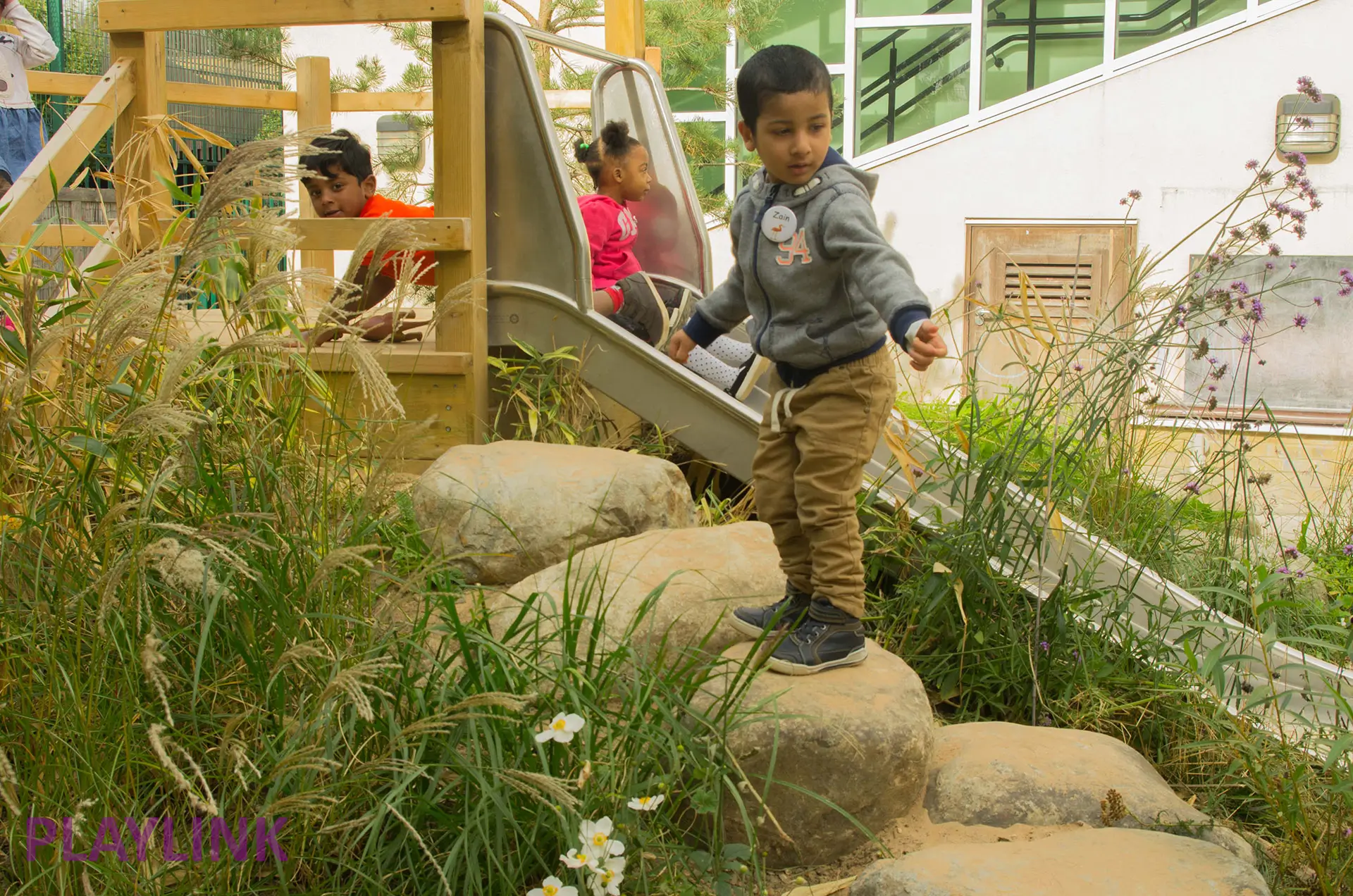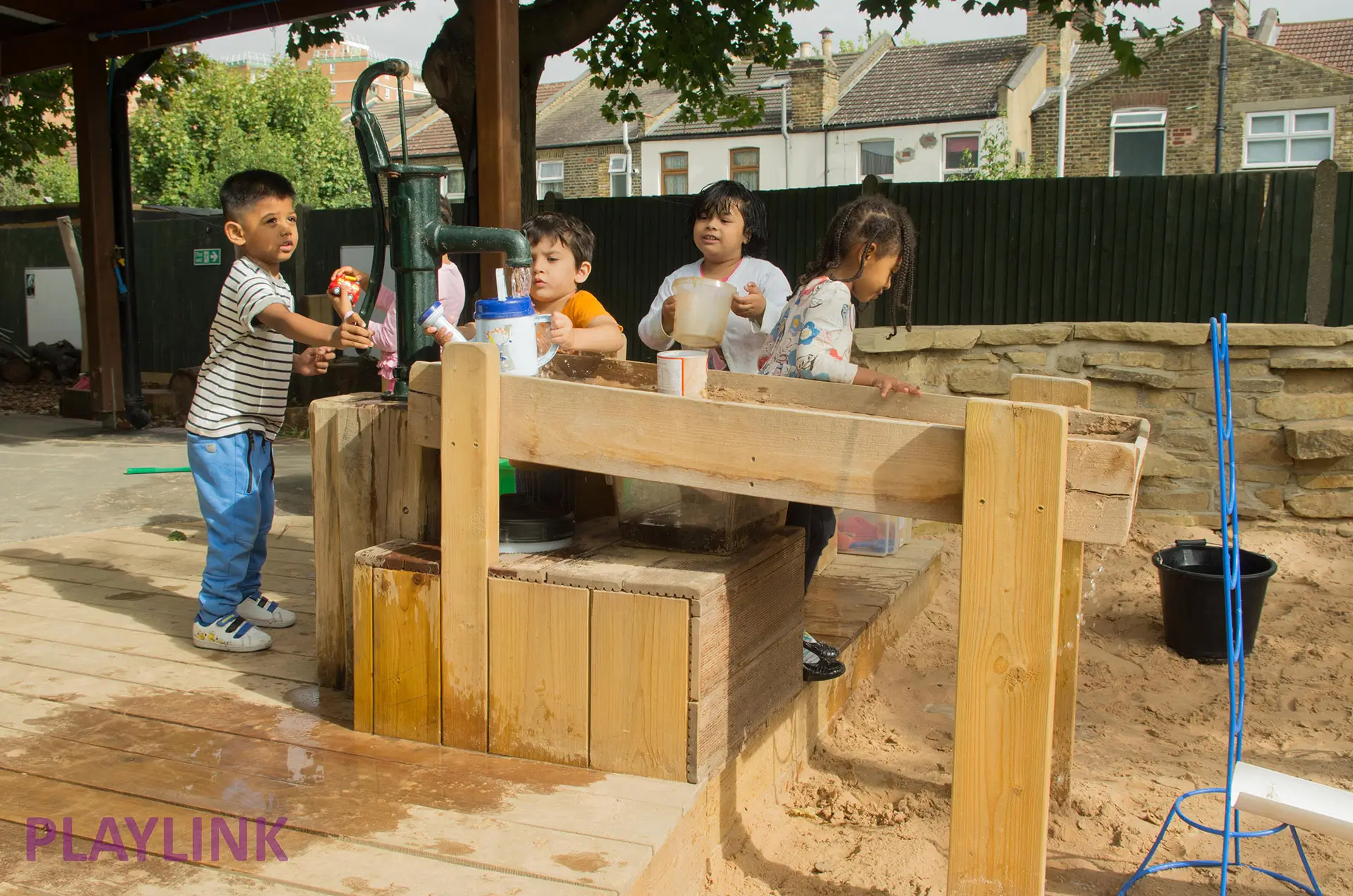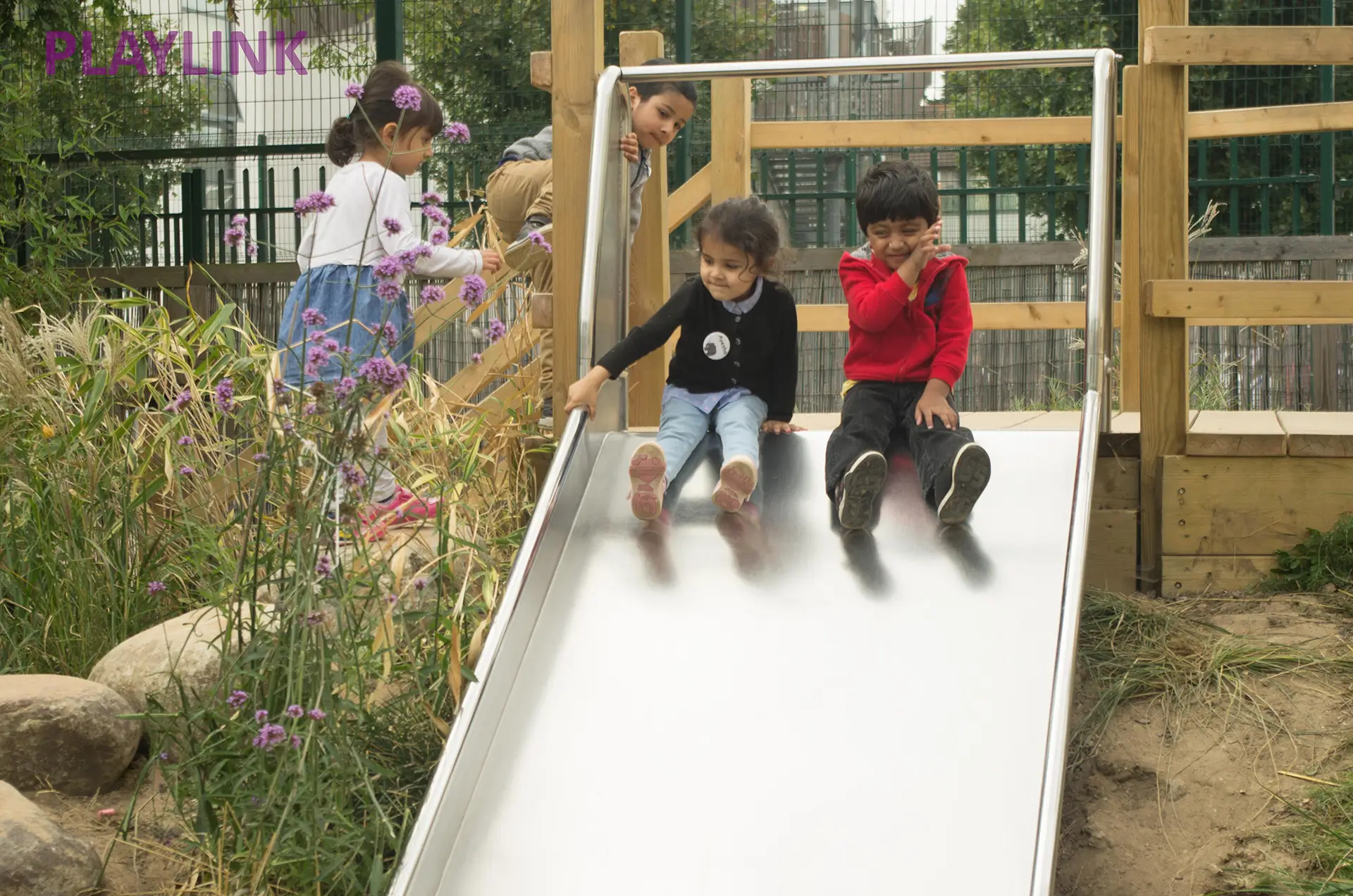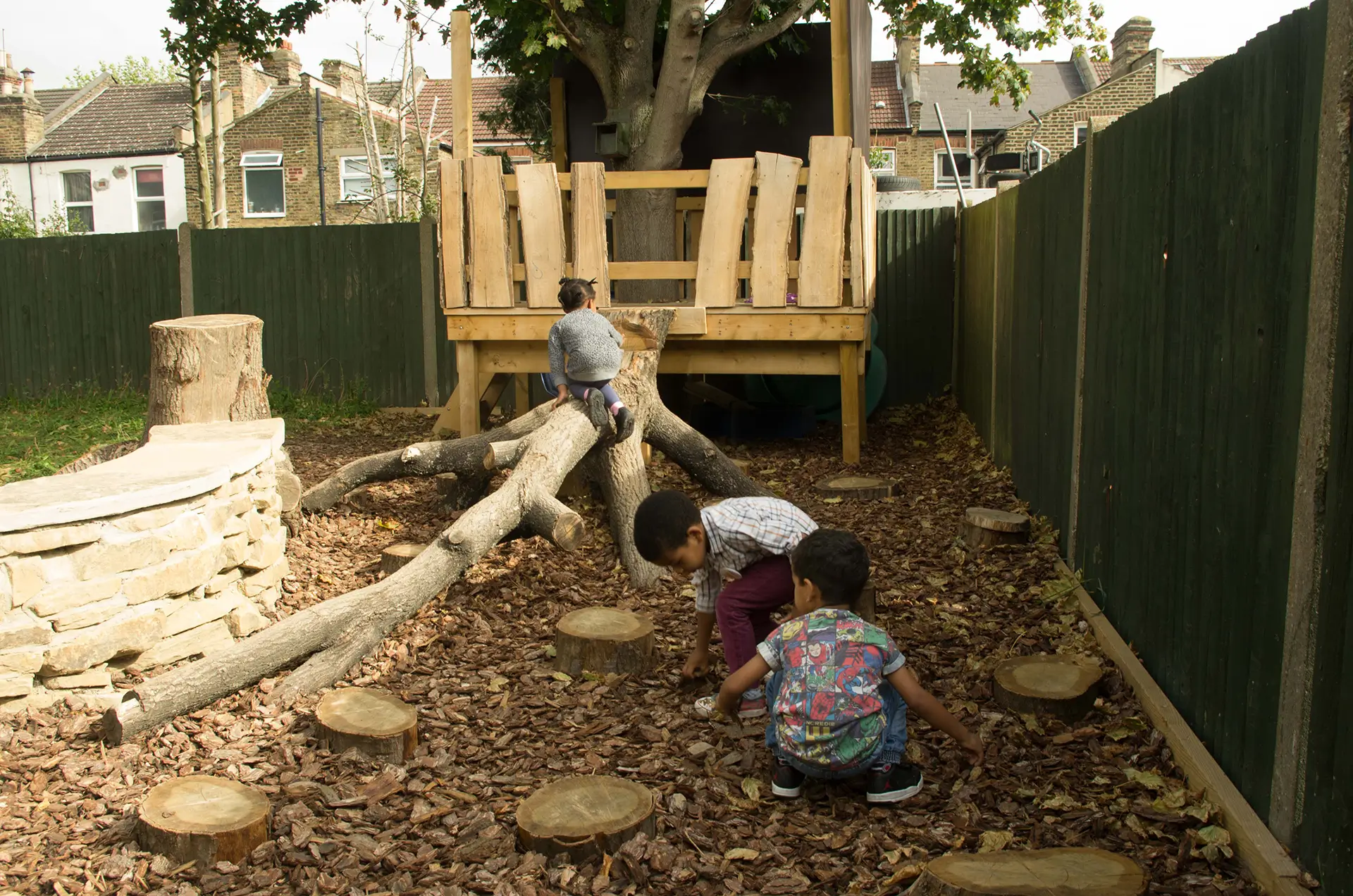SHERINGHAM NURSERY SCHOOL
Children are now outside playing and learning in their newly developed school grounds at Sheringham Nursery School and Children’s Centre.
This was a complex commission for a number of reasons that included: the outdoors was wrapped around three sides of the school building; two of the sides were allocated to a specific age range; one side was the Children’s Centre used by children with their parents and carers.
Our commission was to design and implement a scheme for two of the sides, the two sides separated by the middle area for the under three year olds. Thus we could not design an integrated ‘whole school’ space, but had to think in modular terms, with the aim of creating a ‘rich’ environment within each separate footprint.
From our proposal:
The aim is to create a rich, varied, manipulable and aesthetically pleasing outdoors where children’s play needs and wants can be met. This includes the potential for creating areas where the children can plant vegetables, herbs and flowers, and perhaps even an outdoor cooking space. There is also the potential for children to be involved in aspects of the actual building/planting process.
A large part of the outdoor space feels, and in many ways functions, as indoor space. It is substantially roofed-over with ‘indoor type’ furniture and storage areas. We agree strongly that the outdoor space should be just that and give children the experience of really being outdoors. They should see the sky, feel the rain and the warmth of the sun, direct.
The outdoors as currently configured presents a sense of containment, of children squeezed between ‘features’ and barriers.
As should be expected from PLAYLINK, our aim is not only to design aesthetically pleasing places, places where planting and landscape features are integral to any design, but also to weave into any scheme risk-taking, challenging features. A school’s risk appetite is crucial here – a school culture that is anxious and risk averse can end up with a much photographed outdoors but which children cannot use to the full. (This is not the case here.) As part of our work with the Sheringham Nursery School we conducted a whole-school workshop on risk and play, the aim being to draw out and discuss anxieties and concerns that our design provoked.
Taking a wider perspective
Sheringham Nursery School and Children’s Centre was a delightful, rewarding commission but there are strategic points to be drawn from the need to commission PLAYLINK in the first place.
Whatever the merits of the internal layout of the school, the design of the school building in relation to the outside is appalling. Judging by what was initially provided for play and learning outdoors, along with the dysfunctional outdoor layout, it is clear that the outside – it’s play and learning potential – was either not considered at all, or considered in the absence of insight or understanding about children, play or learning. The school, of course, had no role in determining the design of the school building or its outdoors.
To meet the needs and wants of their children the school and children’s centre felt obliged to secure funds to retrofit their outdoors. The question this raises is: how does it come about that the outdoors – the venue for play and learning – in so many new build schools are so often inadequately designed? Not fully fit for purpose.
And if schools feel they must retro-design and retrofit their outdoors, just how much public money is being wasted when there is sufficient knowledge and skill available to get it right first time?
Years Of Experience
Completed Projects
Happy Clients
